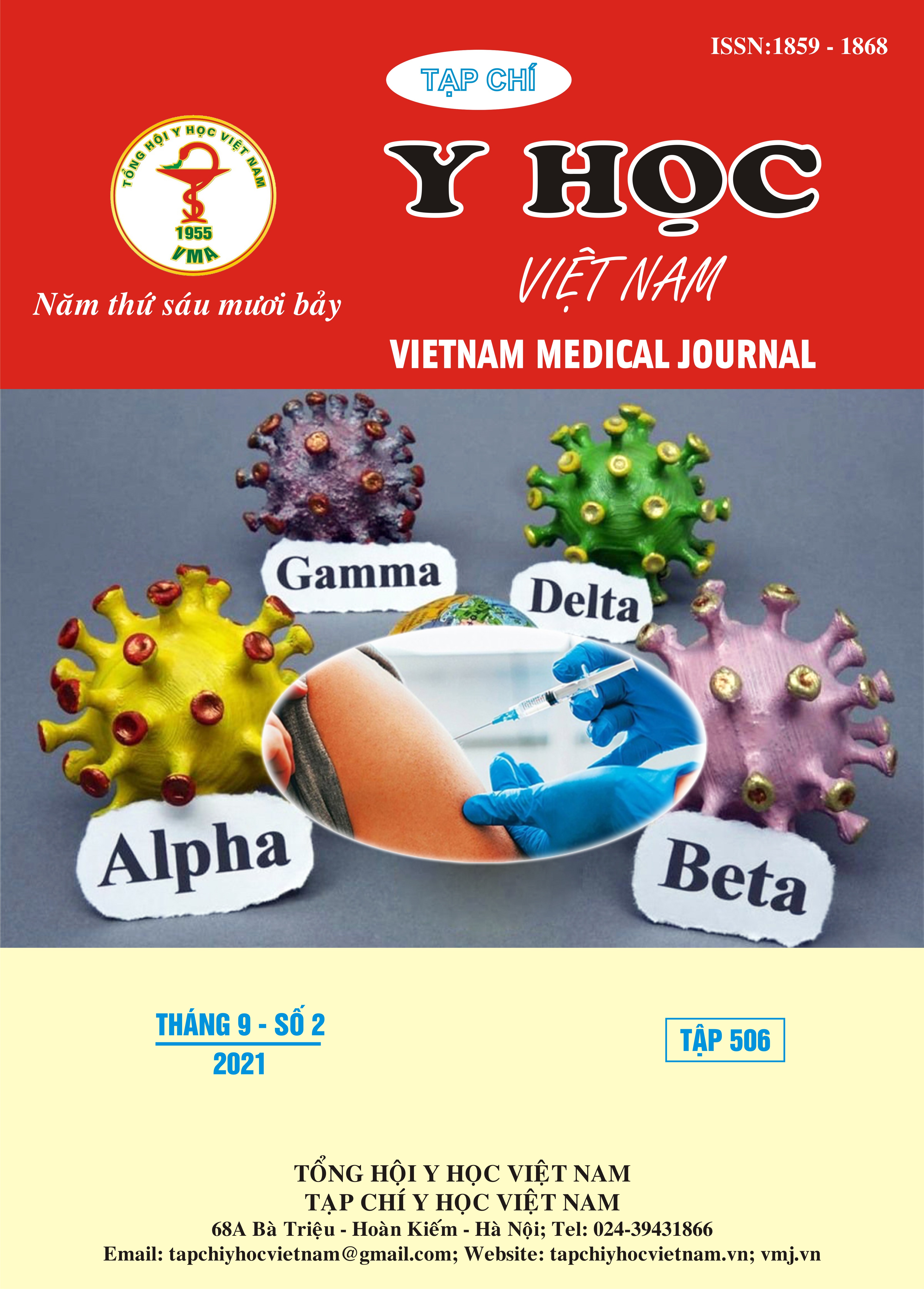OUTCOMES OF SURGICAL MANAGEMENT IN PATIENTS WITH CONGENITAL MELANOCYSTIC NEVI ON FACE AND NECK
Main Article Content
Abstract
This article aims to evaluate the results out come of congenital melanocystic nevi surgery in the face and neck area, Thirty-six patients were reviewed (16 males and 20 females) with 45 surgeries between Juanry 2015 to May 2020 at the Department of Plastic Surgery – Saint Paul Hospital Hanoi. The results showed that the characteristics of melanocystic nevi in the face and neck were very diverse in size and position. Small size was most common (76.2%), medium (14.3%), largesize (9.5%). In 26/36 patients (72.2%) small and medium size nevi were completely removed with natural skin dilation technique, large sized nevi required multiple surgeries. 29/36 nevi (80.5%) were removed in single reconstructive stage, 5/36 nevi (13,8%) were removed in 2 reconstructive stages, only 2/36 nevi (5.7%) were removed in 3 reconstructive stages. Serial excision was used 40/54 times (70%), also local flap was used 7/45 times (12.9%), and 5/54 of full thickness skin graft was used, the neighboring flap and tissue expansion had a smaller ratio of usage. The results were close to be good in (86.7%) of cases, average in (13.3%) of cases, After lesions were completely removed for 3-6 months, the results were good in 86.1% of cases, average in 13.9% of cases and no cases of poor results. The main complications result in keloid scars for 6/36 (5.5%), while mild facial retraction occurred in 6/36 (5.5%). Thus, Serial excision is one of the most simple and effective techniques that can be applied to many area of face and neck, while flap and tissue expansion are less commonly used with large lesions and multiple units.
Article Details
Keywords
Congenital melanocytic nevi, mass removal, serial excision, local flap
References
2. Krengel S; Scope A; Dusza S.W et al. (2013). New recommendations for the categorization of cutaneous features of congenital melanocytic nevi. Journal of the American Academy of Dermatology, 68(3), 441-451.
3. Thuận ĐĐ. Kỹ thuật giãn da tự nhiên trong phẫu thuật tạo hình những tổn thương vùng mặt o trẻ em. Y học Việt Nam. 2007.
4. Nguyễn Hồng Sơn (2010). Nghiên cứu đặc điểm lâm sàng và đánh giá kết quả điều trị phẫu thuật nơ vi sắc tố bẩm sinh khổng lồ, Phẫu thuật tạo hình, Đại học Y Hà Nội, Hà Nội.
5. Linh TTD. Khảo sát đặc điểm Nơ-vi hắc tố bẩm sinh. 2018. Đại học Y Hà Nội, Hà Nội.
6. David Leshem, MD, EyalGur,MD, Benjamin Meilik,MD, RonaldM. ,MD. (2019). Treatment of congenital facial nevi. Journal of Craniofacial Surgery: September 2005 - Volume 16 - Issue 5 - p 897-903
7. Nguyễn Bắc Hùng, Phẫu thuật tạo hình. Hà Nội: Nhà xuất bản y học, 2006.
8. Gur E, Zuker RM. Complex facial nevi: a surgical algorithm. Plastic and reconstructive surgery. Jul 2000. 106(1):25-35. doi:10.1097/00006534-200007000-00005.


